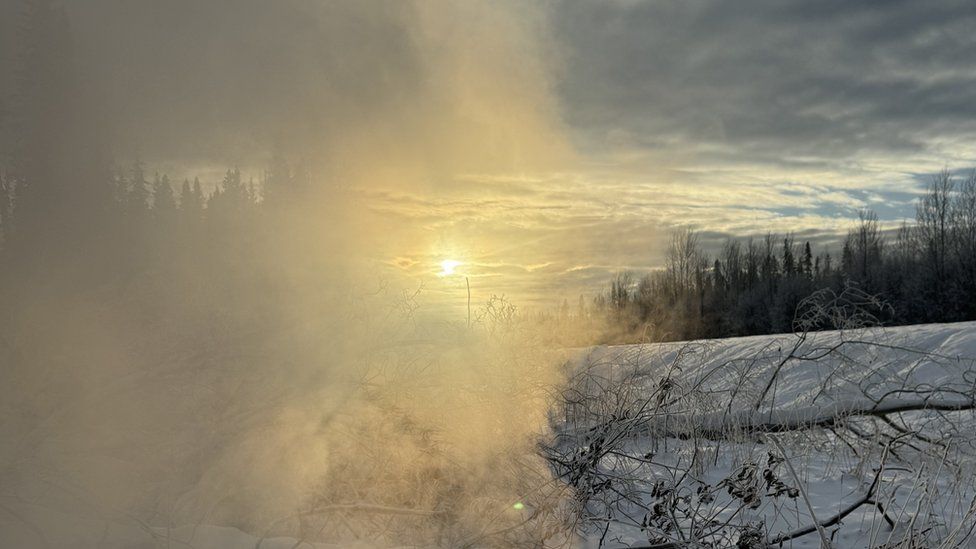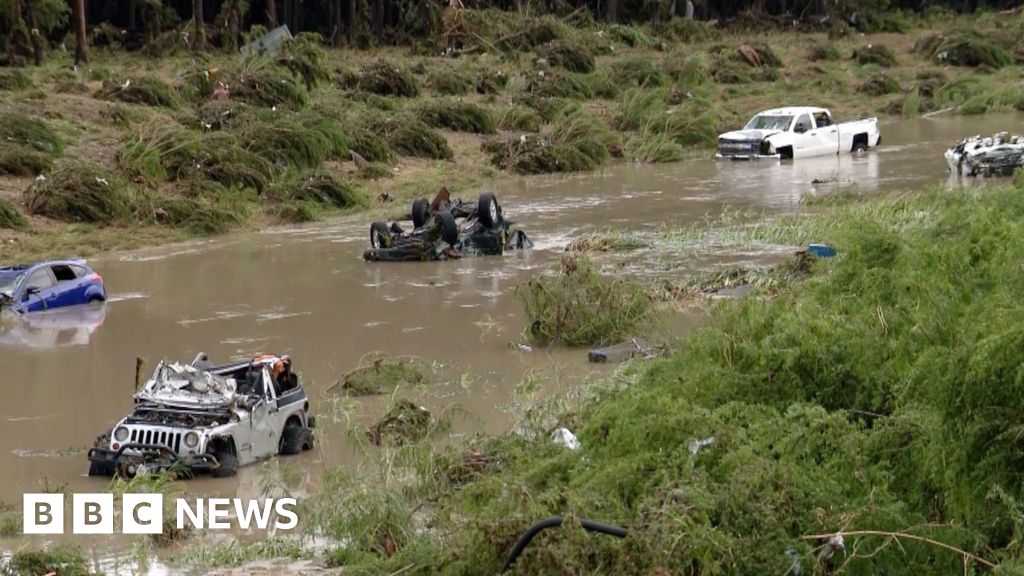ARTICLE AD BOX
 Image source, Sonja Leverkus
Image source, Sonja Leverkus
Smoke from a zombie fire pictured here in Fort Nelson, BC
By Nadine Yousif
BBC News, Toronto
Even in the dead of Canada's winter, the embers of last year's record-setting wildfire season remain. So-called "zombie fires" are burning under thick layers of snow at an unprecedented rate, raising fears about what the coming summer may bring.
People driving on the highway through the town of Fort Nelson, British Columbia (BC) in the winter can easily see - and smell - the clouds of white smoke flowing from the soil around them.
Sonja Leverkus, a firefighter and scientist who is local to the small north-eastern BC town, recalled driving during a snowstorm in November, but the snowfall didn't look white.
Rather, she said, it was blueish-grey because of the smoke in the air.
"I've never experienced a snowstorm that smelled like smoke," said Ms Leverkus, who has lived in northern BC for more than 15 years.
These plumes were still visible into February, she added, even on bitter cold days when temperatures had plummeted to -40C (-40F).
The Fort Nelson smoke is the result of zombie fires - also called overwintering fires.
They are flameless smoulders that burn slowly below the surface, and are kept alive thanks to an organic soil called peat moss common in North America's boreal forest and to thick layers of snow that insulate them from the cold.
These fires are not unusual. In the past 10 years, British Columbia has, on average, seen five or six that continue to burn during the cold months, experts say.
But in January, the province saw an unprecedented peak of 106 active zombie fires, raising concern among fire scientists about what these smoulders will mean for the upcoming wildfire season.
Most typically go out on their own before the spring, but 91 are still burning in BC, according to provincial data, and those that are not extinguished by March could reignite once the snow melts and they are exposed to air.
Because of this, scientists have linked them to early starts of wildfire seasons.
Watch: "Zombie" fires burn under the snow and soil
The neighbouring province of Alberta is also seeing a spike in these winter fires, with 57 burning as of early February - nearly 10 times more the five-year average.
"This continued smouldering through the winter, I think, is very alarming to see", especially after Canada's record-shattering wildfire season last year, said Jennifer Baltzer, a professor of biology at Wilfrid Laurier University and the Canada Research Chair in Forests and Global Change.
More than 18 million hectares (44 million acres) of land were burned by wildfires in Canada in 2023 - an area roughly the size of Cambodia - far surpassing the country's 10-year average.
The season was among the most fatal in recent history, with several firefighters dying in the line of duty.
Thousands of people were forced from their homes and the effect was felt well beyond Canada's borders when smoke blanketed a large section of the US in June.
That calamitous wildfire season is one of the reasons why BC is now seeing such a high number of zombie fires, said Mike Flannigan, a professor and fire management expert at Thompson Rivers University in Kelowna, BC.
Most of them are fires that could not be put out fully by last autumn simply due to a lack of resources, he said.
By the end of the year, officials recorded a total of more than 2,200 wildfires in BC.
Another reason, Prof Flannigan said, is the extreme drought that the province has been dealing with over the last two years.
As of February, most of BC has been under medium to extreme levels of drought, per the province's drought map.
Like the zombie fires, the drought, too, has been noticeable, said Ms Leverkus.
When out in the forest last summer, she said she noticed that a creek that used to flow freely is now "just puddles".
These drought conditions have persisted through the winter. The province has seen so little snow that one ski resort in BC's South Cariboo region was forced to close its doors in early January for the remainder of the season.
Zombie fires were once infrequent, but scientists say they have become more common in recent years due to a rapidly warming climate.
For now, they are being monitored by officials, said Forrest Tower, a fire information officer with BC Fire.
He said that many of them cannot be put out manually as most of the province's firefighting force is on break for the off-season. They do not pose a risk yet, he said.
But the main concern is the fires could ignite again if BC continues to see very little snow or rain into the spring.
If this happens, he said the province's seasonal wildfire force could be immediately thrust into action come March or April.
Prof Flannigan said it is too early to predict just exactly what the upcoming fire season will look like in BC, but what the province has seen so far "is quite unusual".
And with it being an El Nino year, which spells out hot and dry conditions for western Canada, Prof Flannigan said that "the stage is set for a very active spring".

 1 year ago
74
1 year ago
74








 English (US) ·
English (US) ·